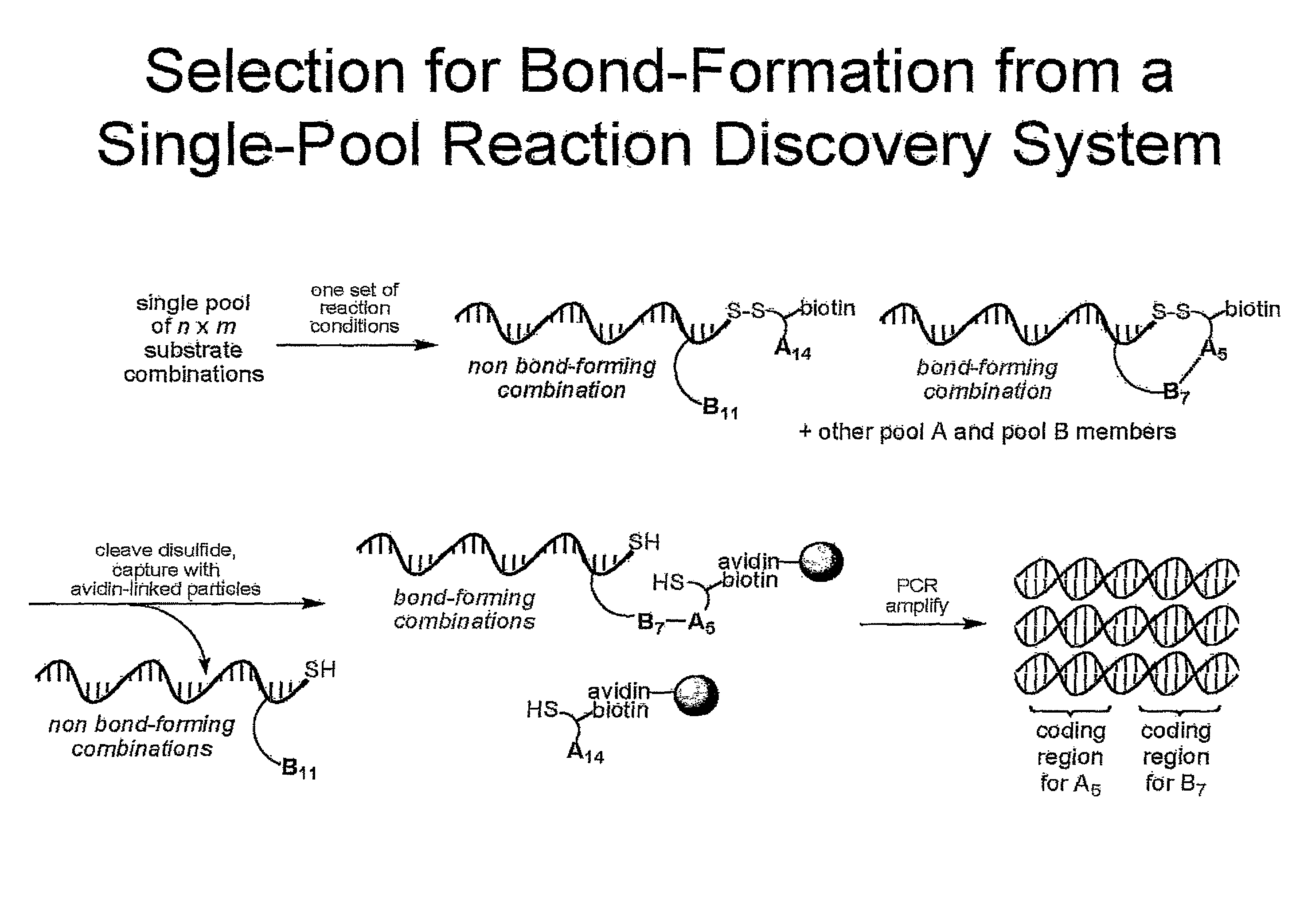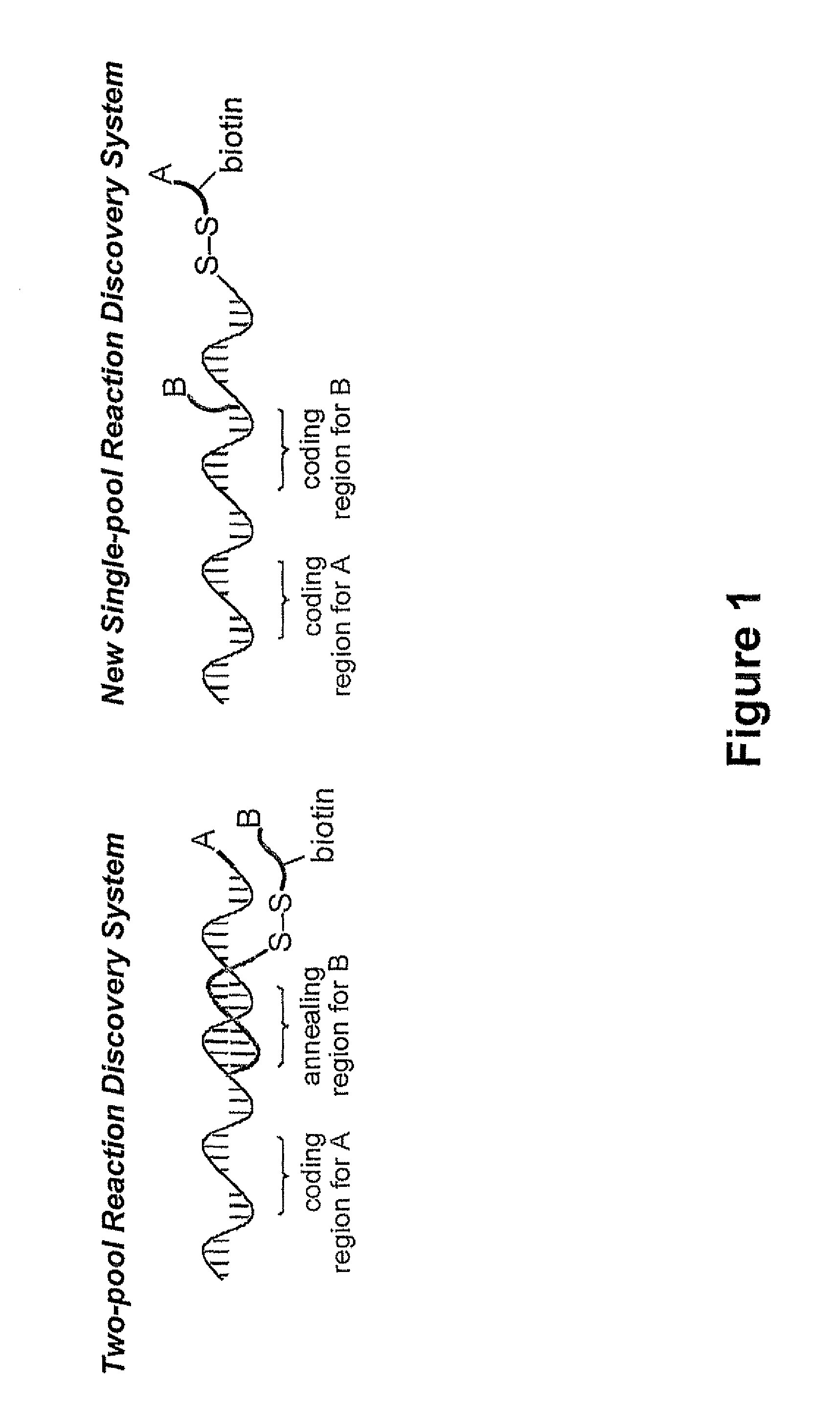Reaction discovery system
a discovery system and reaction technology, applied in the field of reaction discovery system, to achieve the effect of convenient packaging
- Summary
- Abstract
- Description
- Claims
- Application Information
AI Technical Summary
Benefits of technology
Problems solved by technology
Method used
Image
Examples
example 1
Reaction Discovery in 100% Aqueous Solutions and Organic Solvent-Water Mixtures
[0068]We tested the ability to select for reactions under conditions that do not favor duplex formation in a model experiment that included one sequence attached to a reactive combination of substrates and another sequence attached to a non-reactive combination (FIG. 5). The experiment was designed to mimic a reaction discovery selection wherein one substrate combination reacts to form a bond between the two substrates and the other combinations do not react. We separately prepared a template linked to a terminal alkene and a terminal alkyne (template T1) and a template linked to two alkanes (template T2) using the method described above. Fifteen bases separate the 5′ end of the template to which one substrate is attached from the modified dT to which the other substrate is attached, a distance comparable to the separation between the 5′ end of the template and the 3′ end of the complementary DNA in the t...
example 2
General Reaction Discovery Experimental
[0088]The single pool reaction discovery starting material pool was assembled by combining 224 unique DNA template molecules at equal concentration and an internal standard at one tenth that concentration. This reaction discovery pool was prepared at a concentration of 0.5 μM and stored at −20° C. In a typical reaction discovery experiment, 1 pmol of total material (i.e., 2 μL of the staring reaction discovery pool) was combined with combined at the designated concentrations and solvents as noted in a 100 μL, 200 μL, or 300 μL total volume. For example, in the case of the palladium (II) chemistry, 2 μL of starting pool was combined with 10 μL of Pd(II) (20 mM Na2PdCl4 in double distilled water), 8 μL of doubly distilled water, and 180 μL of organic solvent (either acetonitrile or DMSO). Results for Pd(II) chemistry experiments are shown in FIGS. 20-22. In the case of the aqueous reaction reactions, the volume was adjusted with 100 mM MOPS buffe...
PUM
| Property | Measurement | Unit |
|---|---|---|
| temperatures | aaaaa | aaaaa |
| temperatures | aaaaa | aaaaa |
| temperatures | aaaaa | aaaaa |
Abstract
Description
Claims
Application Information
 Login to View More
Login to View More - R&D
- Intellectual Property
- Life Sciences
- Materials
- Tech Scout
- Unparalleled Data Quality
- Higher Quality Content
- 60% Fewer Hallucinations
Browse by: Latest US Patents, China's latest patents, Technical Efficacy Thesaurus, Application Domain, Technology Topic, Popular Technical Reports.
© 2025 PatSnap. All rights reserved.Legal|Privacy policy|Modern Slavery Act Transparency Statement|Sitemap|About US| Contact US: help@patsnap.com



